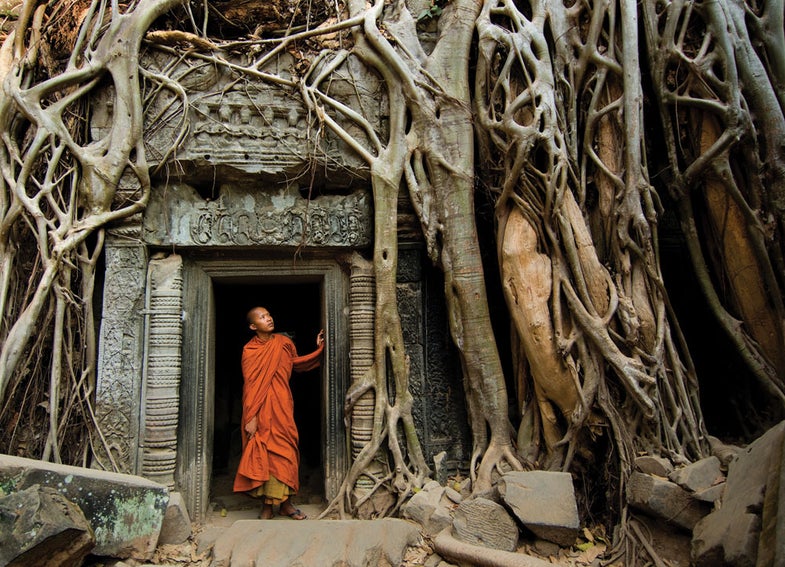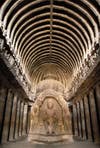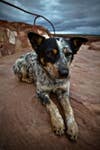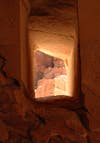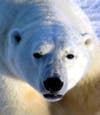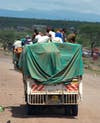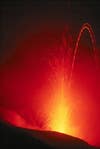Ancient Worlds: The Cave Temples
_Photo Credit: N_ozomiiqel Ajanta and Ellora Maharashtra, India Situated in the Sahayadri Mountain Range near Mumbai, the 34 caves of Ellora were carved out of the face of the Charanandri hills in the 5th century A.D. The nearby Ajanta caves date back to 200 B.C. and are nearly completely covered in astonishing frescoes that are masterpieces of Buddhist art. Must-get shots: The amazing architecture of the Kailasha Temple near the village of Ellora—almost 10,000 square feet, it took almost a century to build and is considered as the world’s largest monolithic structure. For more info: www.maharashtratourism.gov.in.
Ancient Worlds: Chichén Itzá
Photo credit: Grand Velas Riviera Maya Yucatán, Mexico The main attraction of this archaeological site is the central pyramid, El Castillo. Built by the Maya between the 1000 and 1200 A.D., it is one of the most astonishing monuments in the Western Hemisphere. Check out nearby cave of Balankanche, which was discovered by a tour guide in the late 1950s. Among the huge glittering stalagmites you’ll see artifacts that remained untouched for centuries. Must-get shots: Visit on either the spring or autumnal equinox to photograph as the setting sun creates a shadow of a snake that slithers down the steps of the temple of El Castillo over the course of 34 minutes. For more info: yucatantoday.com/en/topics/chicken-itza.
Ancient Worlds: Canyon De Chelly National Monument
Photo credit: Dean Souglass Chinle, Arizona This canyon is one of the longest continuously inhabited landscapes of North America. The area, populated solely by Navajo people as part of the largest Indian reservation in the U.S., is most famous for its multistoried cliff-side homes made from sun-dried clay, first built by the Anasazi people between 350 and 1300 A.D. A four-hour drive from the Grand Canyon, this 130-square-mile canyon is no match in size, but its 2,000 years of history and color-changing sandstone walls make it a crucial stop for anyone who wants to appreciate the ancient beauty of the southwest. Plan your visit over the Fourth of July weekend for the Navajo Nation Powwow in nearby Window Rock, AZ. Must-get shots: The towering solitude of Spider Rock, pictographs on canyon walls that date back to the 4th century. For more info: www.nps.gov/cach/index.htm.
Ancient Worlds: Petra
Photo Credit: Amerune Jordan Referred to as a “rose-red” city because of the pink-hued rock that comprises its sole building material, Petra is an enormous, ancient city that was carved into rock face by the Nabataeans more than 2,000 years ago. The entrance to the city, through the narrow, winding, mile-long Siq Gorge, is an amazing photo op in itself. The gorge leads you to the most famous part of Petra, the Treasury, a classical Greek-style temple carved into a 130-foot cliff that dates back to 56 B.C. Must-get shots: Hundreds of elaborate rock-cut tombs with intricate carvings. For an unusual take on an oft-photographed site, crank up your ISO and take a candle-lit nighttime tour. For more info: www.visit jordan.com.
Exotic Animals: Galapagos Islands
Photo Credit: Alison Wright
Ecuador Six hundred miles off the coast of Ecuador, the 58 islands and cays of the Galápagos archipelago are home to more endemic species of animals than almost anywhere else. That’s why it was so crucial to Charles Darwin’s development of the theory of evolution. And, of course, it’s why so many photographers love to take pictures there. In the air, look for pelicans and albatrosses, on land spot 29 species of land birds and two species of land iguana, and underwater look for dolphins and hammerhead sharks. Must-get shots: The 400-pound Galápagos tortoise, marine iguana, flightless cormorant, Galápagos penguin, and, of course, the famous blue-footed boobie. For more info: Galápagos Conservancy, www.galapagos.org. This Photo: Marine Iguanas, Fernandina Island
Alison Wright marvels at how close she could get to some of the animals of Galápagos. “I almost never used a long lens, and I had to be aware of where I was stepping so as not to crush any of the little critters,” she says. “The secret to creating some drama to photo-graphing these prehistoric looking lizards: Get down on your belly and shoot low.”
Exotic Animals: Cape Churchill
Photo credit: Ansgar Walk (Via Wiki Commons) Manitoba, Canada Photographing polar bears anywhere other than a zoo can prove an elusive task. Which is why a true wildlife lover should make the trek to the “polar bear capital of the world,” more than 600 miles north of Winnipeg in Cape Churchill. The massive predators convene here in October and November to hunt seals while newborn cubs frolic in the dramatic, icy landscape. The location is a little remote, so your best bet is to travel with a tour group that will charter a flight and take you right up to the action. Must-get shots: Playful cubs, action shots of adults sparring and feeding, and the striking colors of the aurora borealis in season. For more info: www.nathab.com/north/classic-polar-bear.
Exotic Animals: Kangaroo Island
Photo credit: Marco Fedele South Australia You’ll find more wildlife and fewer people on this 90-mile island than in many other places on the planet. Visit during the island’s winter (June–September) to easily spot kangaroo and wallaby joeys feeding next to their mothers, baby koalas riding on Mom’s back, “mating trains” of the spiky, platypus-like male echidna, the intricate courtship fights of ospreys, and southern right whales migrating in large numbers. Must-get shots: Fairy penguins among the perfectly white sand dunes, hundreds of sea lions lounging near Seal Bay, and the surreally (and naturally) sculpted boulders aptly named “Remarkable Rocks.” For more info:[ www.tour kangarooisland.com.au](http:// www.tour kangarooisland.com.au).
Exotic Animals: Vanua Levu Island
Photo credit: Barry Peters Fiji The waters of Fiji are home to one of the most diverse and populous marine habitats on earth, including 1,000 species of fish and several hundred types of coral and sponges. You’ll also find myriad anemones, mollusks, and crustaceans, as well as reef passages that take you to gray reef sharks, silvertips, and hammerheads. Visit the Vanua Levu Island for the colorful corals of the famous Rainbow Reef and the opportunity to take the dive boat L’Aventure, where marine biologists will guide you through the amazing underwater world. Must-get shots: The shallow waters of Naviavia Reef make it easy to photograph brightly colored fish in front of coral, or snap away at pipefish, squid, sea stars, butterfly fish, blue starfish, schools of barracuda, sea turtles, and giant schools of parrotfish. For info: www.fijime.com.
Far-Flung Destinations: Kingdom of Bhutan
Photo Credit: Neil A Meyerhoff
East Himalayas This isolated country is nearly 70-percent forest, and photographing there would be a feather in any traveler’s cap, as the government limits the number of tourists allowed in each year. Those dedicated enough will be rewarded with a pictorial feast. Visit in the spring for the blooming rhododendrons and orchids, as well as a peek at the snow-capped mountains. Secure a spot in the spring or fall for one of the Tshechus dance festivals, where local people don colorful costumes and perform masked sword dances and other rituals that date back to the Middle Ages. Truly dedicated travelers should make the several-day trek to Chomolhari, Bhutan’s highest mountain, to visit Taktsang, the Tiger’s Nest, one of Bhutan’s most revered monasteries. Must-get shots: Close-ups of red chili peppers, wide views of lush rice paddies, plus yak herders, and women weaving back-strap looms in the eastern mountain villages. For more info: www.kingdomofbhutan.com. In This Photo: Tiger’s nest monastery
_ Be warned: “On our first visit in 2007 you were allowed to carry cameras into the building and photograph the exterior,” says Neil Meyerhoff of this sacred site. “But in 2009, you had to leave your camera at the gate.”_
Far-Flung Destinations: Isiolo
Photo credit: Richard Stupart Central Highlands, Kenya Eschew the popular national parks of East Africa for a wilderness excursion on a private wildlife preserve in the foothills of Mount Kenya led by native guides. You’ll be able to snap elephants, giraffes, zebras, antelopes, and both the endangered black and white rhinos—without the crowds. And isn’t that all you came here for? Must-get shots: Relative close-ups of animals in their natural habitats, doing what comes naturally. For more info: [www.magical kenya.com](http://www.magical kenya.com).
Far-Flung Destinations: Antartica
Photo credit: US Embassy New Zealand A continent of contradictions, Antarctica defines isolated. Volcanoes erupt from a frozen landscape comprising every shade of blue and white imaginable. Miles of snow and ice stretch as far as your lens can see, yet less than 6 inches of snow falls each year. A layer of ice up to two miles thick covers the continent. A visit here isn’t easy—cruise and expedition ships are the only way to see this one-of-a-kind landscape. Upon arrival, you’ll be rewarded with wildlife, including hundreds of penguins, who so rarely see people that they’ll allow you to (respectfully) get up close. Visit during the austral summer (November to February), when temperatures reach an average high of 27 degrees Fahrenheit and the sun shines for 24 hours a day. Must-get shots: Penguins and seals with an iceberg backdrop. For more info: [www.cool antarctica.com](http://www.cool antarctica.com).
Far-Flung Destinations: Aldabra and La Digue Islands
Photo credit: Didier Baertschiger Seychelles The 115 Seychelles islands straddle the equator nearly 1,000 miles off the east coast of Africa. Most are reachable only by charter flights or boats, and many are uninhabited. While they all offer the kind of remote, tropical beauty that’s the stuff of daydreams, two are must-sees for photographers. Aldabra has been open to the public only since 1991. Coined a living natural-history museum by biologists, it’s home to the giant 600-pound Aldabra tortoises. La Digue is a favorite among photographers for its perfect beaches, blue-green water, and traffic-free town. Must-get shots: The tree-like formations of the raised coral reef (the world’s largest) in the center of Aldabra and the huge pink granite boulders of La Digue. And those tortoises. For info: seychelles.travel.
Far-Flung Destinations: Cape York Peninsula
Photo credit: Feral Arts Australia In a country known for low population density, this huge expanse of untouched wilderness at Australia’s northern tip still stands out. Considered one of the largest undeveloped places in the world, it’s inhabited mainly by aboriginal tribes. The roads are unpaved and often impassable in the rainy season, while other parts are can be seen only by helicopter. Must-get shots: Indian Head Falls in Jardine River National Park and Elliott Falls. The Laura Aboriginal Dance and Cultural Festival takes place in June of odd-numbered years. For info: www.australia.com.
Far Flung Destinations: Colca Canyon
Photo credit: Chris Streeter Peru The Colca Canyon was largely inaccessible until the 1970s—a valley seemingly forgotten by the outside world—and the inhabitants lived in almost total isolation until a road was built. At 62 miles long and up to 2.5 miles deep (twice as deep as the Grand Canyon) Colca is visited yearly by thousands of tourists, yet the villages there remain mostly unchanged. Must-get shots: Cruz del Condor provides a lookout point where condors glide by the snow-covered mountains above the canyon. For more info: www.peru.info.
Festivals: The Highland Sing-Sing Festival
Photo Credit: Chris McLennan
Mount Hagen, Papua New Guinea This island’s remote location—seashells were used as currency until 1933—and vast biodiversity would put it on any travel photographer’s must-shoot list, but it’s the indigenous population of Papua New Guinea that’s the real draw. During August and September, hundreds of people from 700 tribal groups travel for days and dress in elaborate body paint, headdresses, and wigs to participate in a series of shows for the Sing-Sing festival. The event has become popular with tourists, and inevitably more commercialized in recent years, but it’s still a must for photos of people that you won’t see anywhere else. Must-get shots: Close-ups of the vivid primary color face paint, detail shots of costumes, as well as action shots of performances. For more info: www.pngtourism.org.pg. This Photo: Mudman, Pogla Village, Mount Hagen
“These warriors dress as spirits and creep through the mist and jungle to scare away enemies,” says Chris McLennan. His advice: As long as you’re in PNG, visit the remote areas, but get a reputable guide and don’t travel alone.
Festivals: Queen’s Day
Photo credit: Anne Hornyak Amsterdam, Netherlands This annual celebration in honor of the Queen of the Netherlands, Koninginnedag in Dutch, is surefire for candids. Celebrated now on April 30 (the birthday of now-Queen Beatrix’s mother Juliana), the quaint streets and canals of Amsterdam erupt with a million orange-clad revelries for dancing, decorated canal boats, parades, street theater, fireworks, and a massive citywide flea market. The craziness starts the evening of the 29th (Queen’s Night) and runs to the night of the 30th, after which the city empties out to nurse its collective hangover. Must-get shots: Famous Dutch architecture, bicycle traffic, street vendors, and endless rows of brightly colored tulips in the fields outside the city. For more info: www.i amsterdam.com.
Festivals: Carnival
Photo credit: Carnaval.com Studios Port of Spain, Trinidad Considered the mother of all parties, Carnival officially takes place the Monday and Tuesday before Ash Wednesday, but in this Caribbean nation the celebrations begin the day after Christmas when calypso tents open, limbo competitions start, and steel bands compete in preliminary contests. The spectacle kicks off at 4 a.m. on the Monday known as J’ouvert. Over the next 48 hours, you’ll load your memory card with images of revelers covered in everything from elaboratly beaded and feathered costumes to mud and paint, dancing all day and night to the battling masquerade bands. Must-get shots: The challenge won’t be figuring out what to photograph, but staying up for the entire party to capture it all. For more info: www.gotrinidadandtobago.com.
Festivals: UFO Festival
Photo credit: Roswell UFO Festival Roswell, New Mexico On July 8, 1947, an object fell from the sky near this desert town, and the ensuing (alleged) government cover-up has sparked decades of conspiracy theories. Plan a trip for the July 4 weekend for the annual four-day celebration of all things extraterrestrial. Must-get shots: People and their pets dressed in alien, sci-fi, and space-related costumes, the pancake (a.k.a. flying saucer) eating contest, and the intergalactic fashion show. For more info: www.ufofestivalroswell.com.
Festivals: Festival of World Sacred Music
Photo Credit: Walter Rodriguez Fez, Morocco Visit Fez during June to get a chance to photograph musicians from all over the globe. You’ll hear everything from Gregorian chant to Harlem gospel performed (and sometimes danced) by people in traditional garb—whirling dervishes included—in multiple daily outdoor concerts. Although music festivals like this take place in many cities around the world, no others boast a backdrop of crenellated fortress walls, scalloped arches, minarets, and brightly colored mosaics. Must-get shots: The medieval town’s narrow, winding streets overflow with markets and shops—and a wealth of photo ops. For more info: [www.visit morocco.com](http://www.visit morocco.com).
Natural Phenomena: Geysir National Park
Photo Credit: Dylan Toh/Everlook Photography
Iceland This misnamed country (it’s about 89% ice-free) is home to mud pools, hot springs, lava fields, geysers, glaciers, enormous craters, volcanoes, mountains and waterfalls, and a million other photo ops. In Kverkfjöll, hot springs beneath a glacier have created amazing ice caves, and in many places you can see layers of white and black ice, formed from volcanic ash covered with snow. Spot icebergs floating on picturesque lakes, such as the Jökulsárlón glacial lagoon in the southeast. Drive the 860-mile, two-lane ring road. Visit in the winter for the contrast of snow against black lava fields and a glimpse of the Northern Lights. Must-get shots: Bathers in the Blue Lagoon—a natural, blue-green, steaming, thermal swimming pool. And be sure to shoot the Geysir area, where the geyser Strokkur produces a high column of boiling water every 15 minutes. For more info: www.visiticeland.com. This photo: Geysir National Park
_ Under an overcast sky, Dylan Toh of Everlook Photography used a split neutral-density filter to balance the bright blue of Blesi hot spring in the foreground with the erupting Strokkur in the background. “Use an intermediate exposure (0.5 to 1 sec) to capture the geyser,” he advises. “Use a tripod and have wet-weather gear plus a cable release at ready.”_
Natural Phenomena: Aurora Borealis
Photo credit: Feichtnerc Tromsø, Norway One of nature’s most photogenic natural phenomena, the Northern Lights are visible on cloudless nights from late November to early April from several arctic locations and even many places much farther south. But this Norwegian city is the largest north of the arctic circle, making it one of the most popular locations to view the whirling, color-shifting lights in their full glory. Local guides can take you deeper into the mountains where the lights are most intense and you can avoid the light pollution of the town. Must-get shots: The display is perfect for long exposures and time-lapse photography—frame with the snow-covered mountains or city lights in the foreground for added impact. For info: www.destinasjontromso.no/english.
Natural Phenomena: Lunar Rainbows
Photo credit: Wiki Commons Victoria Falls, Zimbabwe The mist from these mile-wide falls can be seen from more than 40 miles away, and the cascade of crashing water to the gorge below create a near constant display of rainbows. If that’s not enough of a natural phenomenon for you, three times a month, from the Zimbabwe side of the falls, lunar rainbows are formed by the bright moonlight between dusk and dawn. Must-get shots: Breathtaking aerial shots of the size of the falls from the “Flight of the Angels” plane rides, and don’t miss the changing pink and orange hues of the mist at sunrise and sunset. For info: www.zimbabwetourism.net.
Natural Phenomena: Supercell Clouds
Photo credit: Greg Lundeen (via Wiki Commons) Great Plains of the U.S. It’s impossible to guarantee that you’ll get a photo of these enormous UFO-like clouds, but with a little research you can plan a trip that will put you in the path of some severe weather and possibly some of nature’s most phenomenal cloud formations. Storm-chasers block off a chunk of time in spring (May is optimal) and obsess over weather patterns, load up their cars, and keep on top of storm movement by checking radar images. Then the chase is on. ** Must-get shots:** Almost any photo of a supercell from a safe distance is sure to be awe-inspiring, but try to frame one with an object such as a tree or silo to give your picture a sense of scale. For more info: www.nssl.noaa.gov.
Natural Phenomena: Stromboli Volcano
Photo Credit: Wolfgang Beyer (Via Wiki Commons) Italy Stromboli, which occupies its own island in the Aeolian Archepelago between Sicily and southwestern Italy, has been erupting nearly continuously for more than two millennia. Currently the most active volcano in the world, it erupts about every 20 minutes. Called the “Lighthouse of the Mediterranean,” it typically produces small explosions that throw clots of molten lava tens or hundreds of feet into the air. Must-get shots: The incandescent fountain of magma against the colors of the setting sun. For info: www.italia.it.
